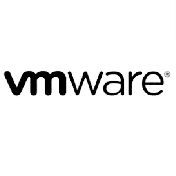Seminarinhalt
This course provides knowledge of the advanced capabilities of the HPE Primera storage arrays, including lower level data reduction features, reporting, monitoring and alerting, QOS, and local and remote replication options. You gain practical understanding of HPE Primera array capabilities using extensive hands-on lab exercises.
Course objectives
At the end of this course, the learner should be able to:
Course objectives
At the end of this course, the learner should be able to:
- Describe the objectives and purpose of this course
- Discuss the topics addressed in this course
- Describe the benefits of data reduction technologies
- Perform space reclamation
- Describe data reduction technologies: deduplication, compression, and data packing
- Perform a data reduction estimation
- Perform an online virtual volume conversion
- Describe System Reporter capabilities
- Use SSMC and the CLI to run reports
- Use the CLI stat commands to look at realtime statistics
- Use HPE Primera app volume sets (AppVVsets) in performance context
- Use the SSMC Workload Insights feature for performance reasons to isolate application spikes and trends
- Understand the SSMC Workload Insights concept of a performance score
- Understand the advantages of the Topology Insights feature to pinpoint performance bottlenecks
- Describe basic HPE Primera UI monitoring
- View, interpret, and manage system events and alerts
- Use the checkhealth command for troubleshooting
- Work with alert notifications for System Reporter
- Monitor and manage the event log
- Forward events to syslog server
- Explain SNMP settings and capabilities
- Describe the SMI-S standard, WBEM initiative, and HPE Primera CIM support
- Explain REST API use
- Describe the advantages of Priority Optimization and Quality of Service (QoS)
- Discuss the performance implications of Priority Optimization
- Administer Priority Optimization
- Monitor the impact of Priority Optimization
- Create a scheduled and immediate snapshot
- Export a snapshot
- Perform a recovery using a snapshot
- Work with a clone
- Describe the key features, benefits, and advantages of Remote Copy
- Explain different types of Remote Copy implementations
- Explain the differences between synchronous and periodic asynchronous replication modes
- Discuss different failure scenarios
- Perform a failover of a Remote Copy group
- Briefly describe data migration, high availability, and disaster tolerance solutions
Programm
Module 1: Thin Features and Data Reduction
Module 2: Monitoring and Reporting
Module 3: Events and Alerts
Module 4: Priority Optimization/QoS
Module 5: Snapshots and Clones
Module 6: Remote Replication
- Data reduction introduction and overview
- Zero-detect and thin persistence
- Space reclamation on Windows, Linux, VMware® • Block alignment
- Thin persistence technology
- Compaction and overprovisioning
- Data reduction technologies
- Deduplication, compression, and data packaging
- Savings estimation
- Online virtual volume conversion (dynamic optimization)
Module 2: Monitoring and Reporting
- System Reporter introduction
- Data retention
- SSMC System Reporter options
- Types of reports
- Default reports in SSMC
- Report controls
- Report templates
- Creating historical and real time reports
- Scheduling/emailing reports
- CLI reporting
- Performance view
- Analytics and workload Insights
- Application volume sets
- Topology Insights
- Data Services Cloud Console
- Data Ops Manager
- Primera UI monitoring overview
- On-node monitoring overview
- Monitoring and reporting
Module 3: Events and Alerts
- Alerts and events overview • Managing alerts—SSMC/CLI
- Alerts in Data Services Cloud Console
- Managing events—SSMC/CLI
- Alerts and events tiering
- Alert spare part notification
- Syslog support
- The checkhealth command overview and use
- Troubleshooting
- System Reporter performance alerts management
- SNMP overview
- SNMP use—MIBs, alert traps
- SNMP management
- CIM API overview
- HPE Primera CIM API
- About SMI-S
- CIM standard
- CIM management
- REST API overview
- REST API usage
Module 4: Priority Optimization/QoS
- Introduction and features
- How does it work
- Examples
- Configurable parameters and their meaning
- Configuring and managing via SSMC
- Configuring and managing via CLI
- Monitoring via SSMC and CLI
- HPE Primera Priority Optimization
- Priority Optimization using the Data Services Cloud Console and Primera UI
- Summary and best practices
Module 5: Snapshots and Clones
- HPE Primera snapshot concepts
- HPE Recovery Manager Central
- Snapshot use cases
- How snapshots work
- Working with a snapshot using SSMC
- Snapshot and Virtual Lock
- Working with a snapshot using CLI
- Primera UI snapshots and snapshot schedules
- Data Services Cloud Console protection policies and schedules
- Clone introduction and how it works
- Working with a clone using SSMC
- Working with a clone using CL
Module 6: Remote Replication
- Remote Copy introduction
- Remote Copy network transport methods
- Remote Copy group
- Replication modes
- Replication topologies
- Remote Copy operations
- Failure scenarios and failover
- Post failover actions overview
- Recover/restore after a failover
- Peer persistence overview
- HPE Cluster Extension overview
- VMware vSphere® Site Recovery Manager overview
- Data migration options overview
- HPE Primera Peer Motion
Zielgruppen
Storage administrators who desire additional training on the advanced features of HPE Primera
Vorkenntnisse
- HM9Q5S: HPE Primera I: Management and Connectivity
- HN5B2S: Introduction to HPE Primera (with extended eLearning)
- HN5A9S: Introduction to HPE Primera


